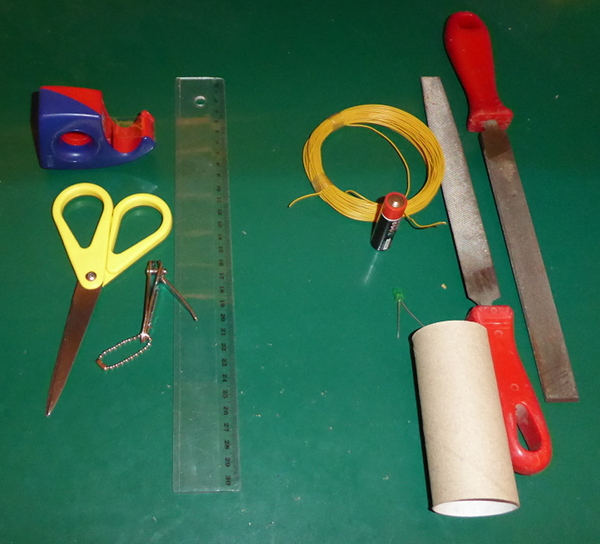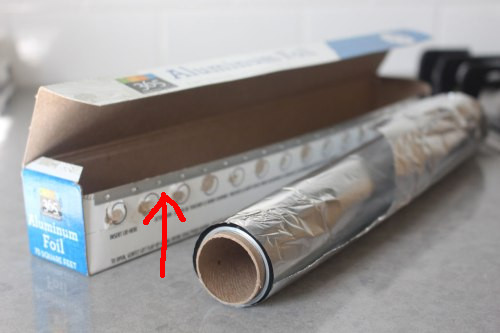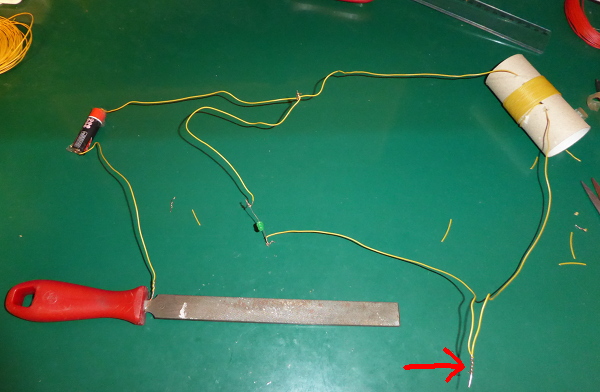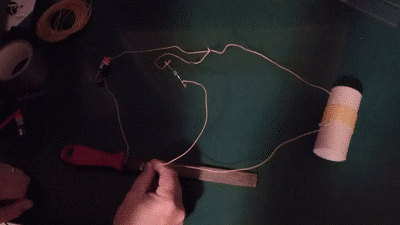Electronics - “Art Attack” style.
The simple voltage booster - Table of Contents

A simple voltage booster to light a 2.2 volt green LED from a 1.5 volt AA dry cell.
I got to thinking about how voltage boosters work the other day, and how to demonstrate how they work.
I find that I learn best when I have a concrete example in front of me to work with. I can learn abstract things from other abstract things, but I find that a real, tangible thing helps to connect to and understand the abstract things.
How a voltage booster actually operates is really rather abstract, and common voltage booster circuits require a lot of understanding of electronics. I mean, I really don’t want to try to explain a “Joule Thief” circuit to someone who has just learned the basics of electricity and electronics.
What I’m going to do today is to build a voltage booster, and show how it is done in a way such that anyone can duplicate it.
When my children were little, we used to watch a TV show called “Art Attack.” On “Art Attack,” they make various things that could loosely be called “Art.” Most of the things are made from materials that you can find in just about any home.
In the spirit of “Art Attack,” I’ve decided to build a voltage booster out of things that can be found in nearly any home - with a couple of exceptions. One is that in order to demonstrate that it is a voltage booster I will be using a light emitting diode (LED.) While these can be found in just about any home, they are usually installed in some device and can’t be conveniently used. Wire is the other thing. It is also present in most homes, but I really don’t want you or the kiddies ripping the wiring out of the walls.
To actually build this gadget, you will need to purchase two things:
- A green LED. A yellow LED would also work. Buy several. They are cheap, and if you go experimenting with them they can break.
- A roll of telephone wire. That’s single strand, solid core wire where the wire diameter is around 0.6mm (22AWG.) Something like this. That should be available any place you can buy an LED. You only need a few meters (10 to 15 feet for non-metric types.)
I’m not going to explain any of this yet. Build the gadget and see it work. Play with it, see what it does and what it doesn’t do. Play with the parts of it if you like. I’ll explain it in my next blog post.
For now, I’m going to pretend to be 10 years old and present to you
The “Art Attack” style voltage booster
| What you need: |
 |
| Note: That is a AA dry cell. Alkaline is fine. Carbon/zinc is OK. NiMH or NiCad is OK. Do NOT use 18650 lithium batteries. |
| Alternative for the file: |
 |
| You can remove the cutter stripe from a box of aluminum foil or plastic wrap and use the cutter instead of the file. |
 |
| That’s 22 turns of wire around the cardboard tube. A turn or two more or less won’t hurt. |
 |
| Four pieces of wire needed. All about 30 cm long. |
 |
| Strip the insulation from the ends of all wires, including the wires from the coil. Use the scissors to nick the insulation and pull it off of the wire. |
 |
| Strip the insulation off of one wire longer than all the others. This goes from the AA cell minus terminal to the shank of the file. |
 |
| All the parts ready to be connected. |
 |
| Twist these ends of these two wires in to little balls. |
 |
| Attach a wire to each leg of the LED. |
 |
| Connect the LED to the coil. Connect to the pin on the round side of the LED. |
 |
| Connect the LED to the battery. Connect to the pin on the flat side of the LED. |
 |
| Connect the coil to the battery. |
| Completed circuit |
 |
| The red arrow marks the switch: |
 |
Now make it go!
Touch the switch to the file. The LED will not light.
Remove the switch from the file. The LED will flash once.
Pull the switch across the rough side of the file. The LED will flash on and off. If you move fast enough, the LED will appear to be on all the time as the switch moves across the file.
| Wheee! |
 |
Always remove the switch from the file after use. If the switch is left touching the file, then it will drain the battery.
What to do if it doesn’t work:
- Squeeze the connections to the battery tightly and hold them while operating the switch.
- Check that the LED is wired correctly. Reverse the connections to the LED if you aren’t sure.
- Try a new battery.
How does it work?
I’m not going to explain it yet. I’ll write it all up in my next post.
In the mean time, try to make the LED light up using just the battery without the coil (1 AA only, two batteries is cheating.) Also try unwinding the coil and see if the circuit still works - every thing the same as shown above, but instead of the coil wrapped around the tube, stretch the wire from the coil out straight.
If you’ve built the simple voltage booster, let me know how it worked out.
The simple voltage booster - Table of Contents























